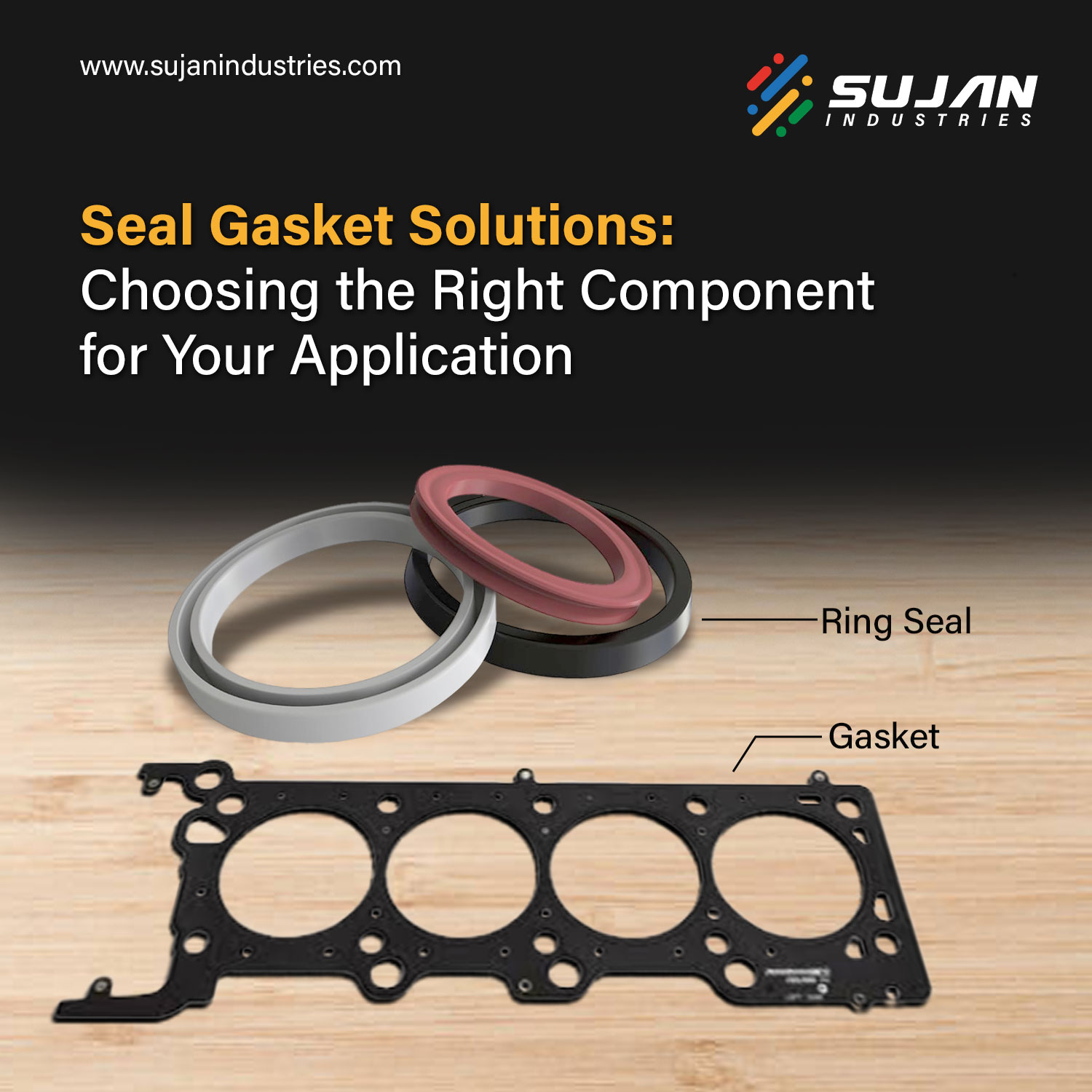
While the terms “seal” and “gasket” are often tossed around as if they’re the same, this common mix-up can lead to confusion among engineers, purchasers, and technicians.
Though both seal gasket play crucial roles in maintaining system integrity and preventing leaks, their applications differ significantly. Manufacturers typically use gaskets to seal flat surfaces such as joints, while they design seals to prevent leaks in moving components like pumps, engines, and rotating shafts.
This blog will help you find the best Seals & Gaskets by explaining the distinctions between the two, reviewing their uses, and providing the information you need to make an informed decision.
A gasket mechanically seals the gap between two static surfaces to prevent gases, liquids, or other substances from leaking.
Typically, manufacturers use gaskets in static applications where the sealed sections remain free from relative motion.
Manufacturers choose materials for gasket production such as metal, rubber gasket, cork, or silicone based on the specific requirements of the application. For example, industries like automobile, oil and gas, and food and beverage sectors often favor rubber gaskets for their flexibility and durability.
Various manufacturing techniques are also available for gasket production, depending on the material and intended use. These techniques include Rubber Extrusion, Molding processes (like Compression, Injection, and Transfer Molding), precision slitting, and custom die setting.
Modern sealing technology uses various seal types, such as mechanical, rotary, and valve stem seals.
Seal materials, including rubber, polyurethane, and metal, vary based on the operating conditions they encounter, such as temperature, pressure, and fluid type. Unlike gaskets, which serve static applications, seals operate in dynamic environments like rotating shafts, pumps, motors, and engines.
Typical seals have a flat, spherical shape with a rubber inner ring angled and encased in a metal surrounding. A seal’s interior layer’s tilted angle promotes leakage prevention in dynamic applications. A seal’s usual function is to keep out fluids, airborne particles, and other pollutants by sealing up spaces between two moving components. They are prevalent in the automobile industry and are commonly found in gearboxes, crankshafts, and engine mounts to maintain fluid integrity despite motion.
In addition to guaranteeing the retention of high-pressure fluid in hydraulic cylinders, seals safeguard pumps, compressors, and valves from fluid or gas leakage.
However, there are cases where gasket and seal properties are combined to form what is known as a seal gasket. In this configuration, components can offer static sealing-like gaskets while being able to accommodate small vibrations or movements like seals. This seal gasket combination is highly beneficial in applications requiring static and dynamic properties, such as in hefty machinery.
Understanding the differences between seals gasket is critical for making informed product selections, avoiding expensive repairs, improving system performance, and minimizing downtime.
Choosing correctly between the two guarantees adherence to industry standards, which in turn contributes to the preservation of operational safety and efficiency.
Additionally, identifying their distinctive responsibilities is essential for optimizing machinery and processes in any industry. For example, if used incorrectly, a gasket in a dynamic application could cause the product to deteriorate quickly.
On the other hand, a seal in a static application would not provide enough rigidity and could cause the product to break.
While seal gaskets are both essential components of industrial applications, understanding their different responsibilities will help you choose the proper component, resulting in maximum system performance.
The combination of seal and gasket (seal gasket) provides a hybrid solution for applications needing static and dynamic sealing qualities thanks to advancements in materials and design.
Finding the correct manufacturer is critical to ensuring quality and performance when it comes to seals and gaskets.
For customers looking for rubber manufacturers in India, Sujan Industries stands out as a reliable industrial sealing solution provider. Leveraging cutting-edge technology and dedication to innovation and excellence, Sujan Industries specializes in designing and manufacturing high-performance seals & gaskets tailored to diverse industrial needs.
With years of expertise, we cater to diverse industries such as automotive and food services, delivering products that adhere to global quality and safety benchmarks.
Ready to upgrade your sealing solutions? Partner with Sujan Industries today to experience the difference in quality and performance.